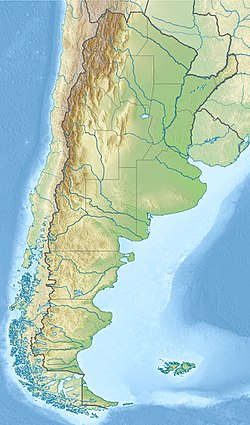Top Qs
Timeline
Chat
Perspective
Los Molles Formation
Geologic formation of the Early to Middle Jurassic From Wikipedia, the free encyclopedia
Remove ads
The Los Molles Formation is a geologic formation of Early to Middle Jurassic age, located at northern and central part of Neuquén Basin at Mendoza Shelf in Argentina. It is overlain by the Niyeu–Lajas Formation.[1]
Remove ads
Description

It is the second largest oil and gas formation in the Neuquén Basin after the Vaca Muerta. Los Molles Formation is estimated to have 275 trillion cubic feet (7.8×1012 m3) of technically recoverable shale gas and 3.7 billion barrels (590,000,000 m3) of technically recoverable oil.[2] In July 2015, the Buenos Aires Herald indicated that Pan American Energy and YPF planned to drill 46 shale gas wells in Los Molles over the next four years in their Lindero Atravesado drilling block, at an estimated cost of US$590 million.[3]
Remove ads
Fossil content
Color key
|
Notes Uncertain or tentative taxa are in small text; |
Dinosaurs
Ornithischians
Crocodylomorphs
Ichthyosaurs
Plesiosaurs
Molluscs
Cephalopods
Remove ads
See also
- Vaca Muerta
- List of dinosaur bearing rock formations
- Toarcian turnover
- Toarcian formations
- Marne di Monte Serrone, Italy
- Calcare di Sogno, Italy
- El Pedregal Formation, Spain
- Sachrang Formation, Austria
- Posidonia Shale, Lagerstätte in Germany
- Ciechocinek Formation, Germany and Poland
- Krempachy Marl Formation, Poland and Slovakia
- Lava Formation, Lithuania
- Azilal Group, North Africa
- Whitby Mudstone, England
- Fernie Formation, Alberta and British Columbia
- Whiteaves Formation, British Columbia
- Navajo Sandstone, Utah
- Mawson Formation, Antarctica
- Kandreho Formation, Madagascar
- Kota Formation, India
- Cattamarra Coal Measures, Australia
References
Wikiwand - on
Seamless Wikipedia browsing. On steroids.
Remove ads
